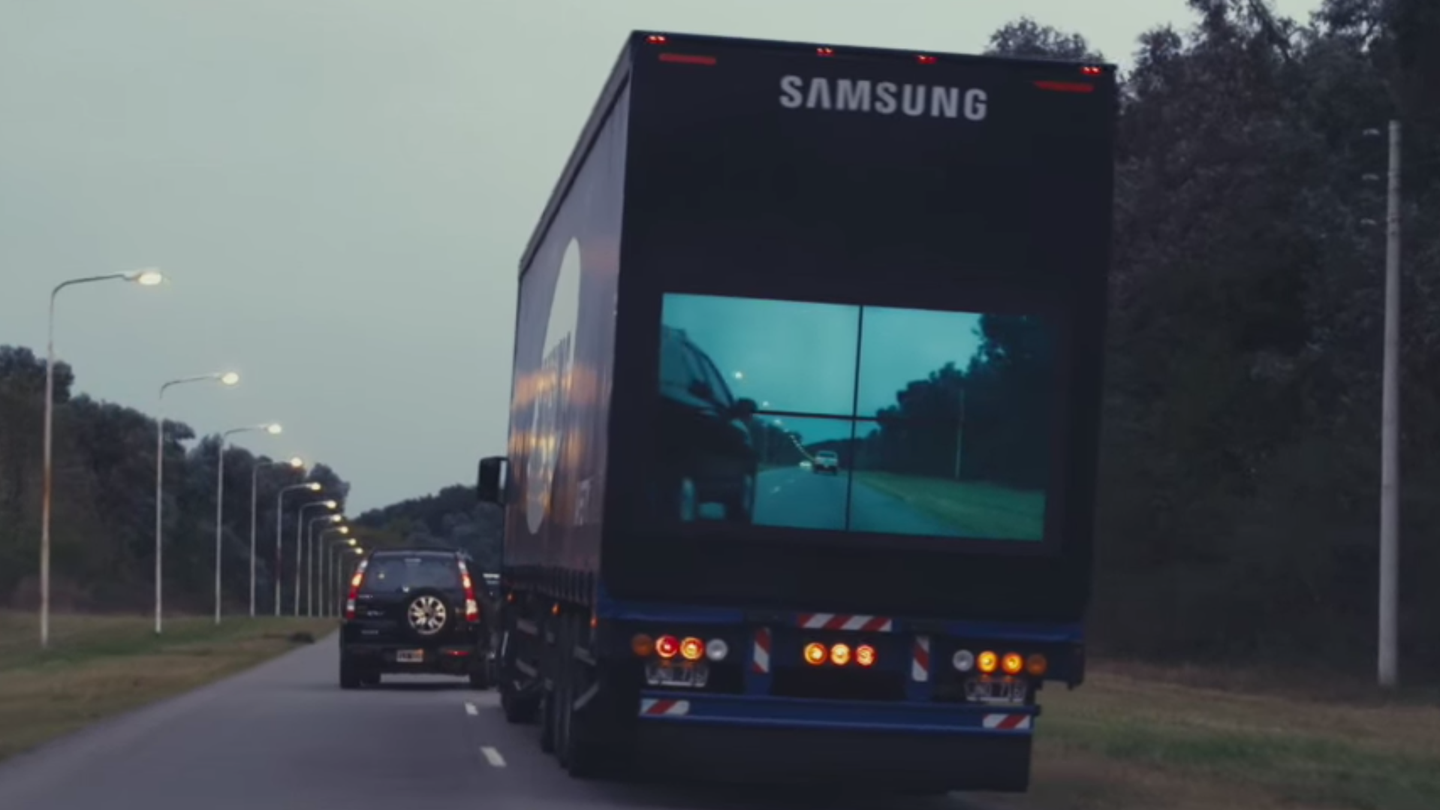The Samsung Safety Truck’s Brilliance and Challenges
This radical 18-wheeler is designed to make passing safer. But, as with any new tech, it drags up difficult questions.

In Argentina, someone is killed in a traffic accident every hour. Most common cause? Unsafe passing on two-lane roads. So, working with Volvo and ad agency Leo Burnett, Samsung developed the Safety Truck. It has two wireless cameras on the front of the cab that transmit the view down the road to four, 46-inch monitors that fit on the rear of the 18-wheeler. The monitors are weatherproof and dustproof. Now, after four months of fine-tuning, Samsung is putting its Safety Truck on the road in La Plata, Argentina, for an extended trial. If the pilot program’s successful, the company says it will begin supplying the trucks globally.
The prototype Samsung Safety Truck was shown at the Cannes Film Festival last year, where it impressed—enough to garner a spot on TIME’s 25 Best Inventions list. Still, it took a few of Argentina’s larger appliance retailers to step up to put the truck on the road. The experiment will run for the year to see how it improves safety; Samsung also will study if flat panels can be deployed in other markets.
One aspect not discussed is the massive dash-cam capture potential of the footage. That is: The camera always is recording. So a driver’s reaction to what might happen on the road in front of the truck could be dangerous. And it’s not clear what legal ramifications might ensue if we eventually see the tech on trucks everywhere.
Yes, the concept could lead to safer passing. But it’s also bound to lead to courts wanting to get ahold of the footage to settle legal disputes, especially because the down-the-road perspective is far wider than that of any puny dash-cam. Like body cameras, new technology on the road has consequences both negative and positive.

